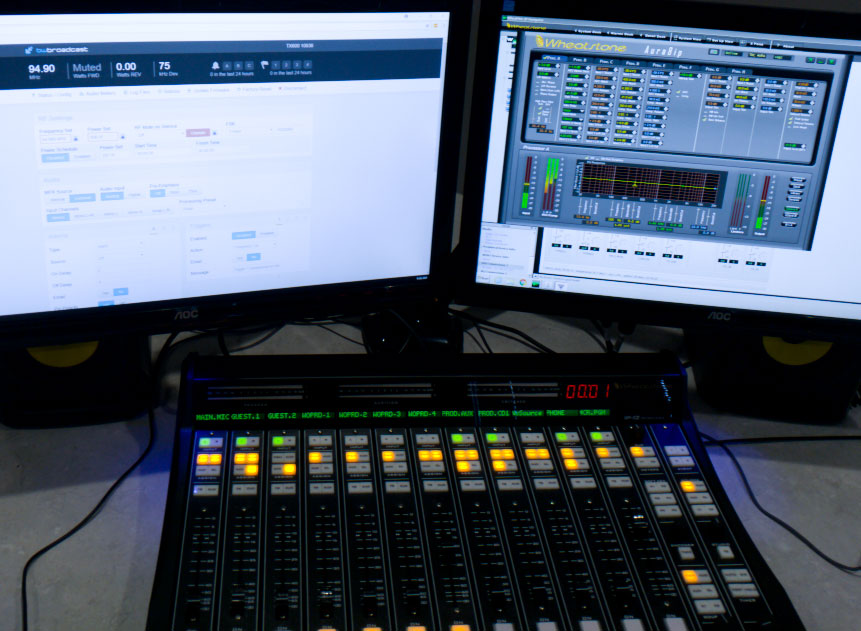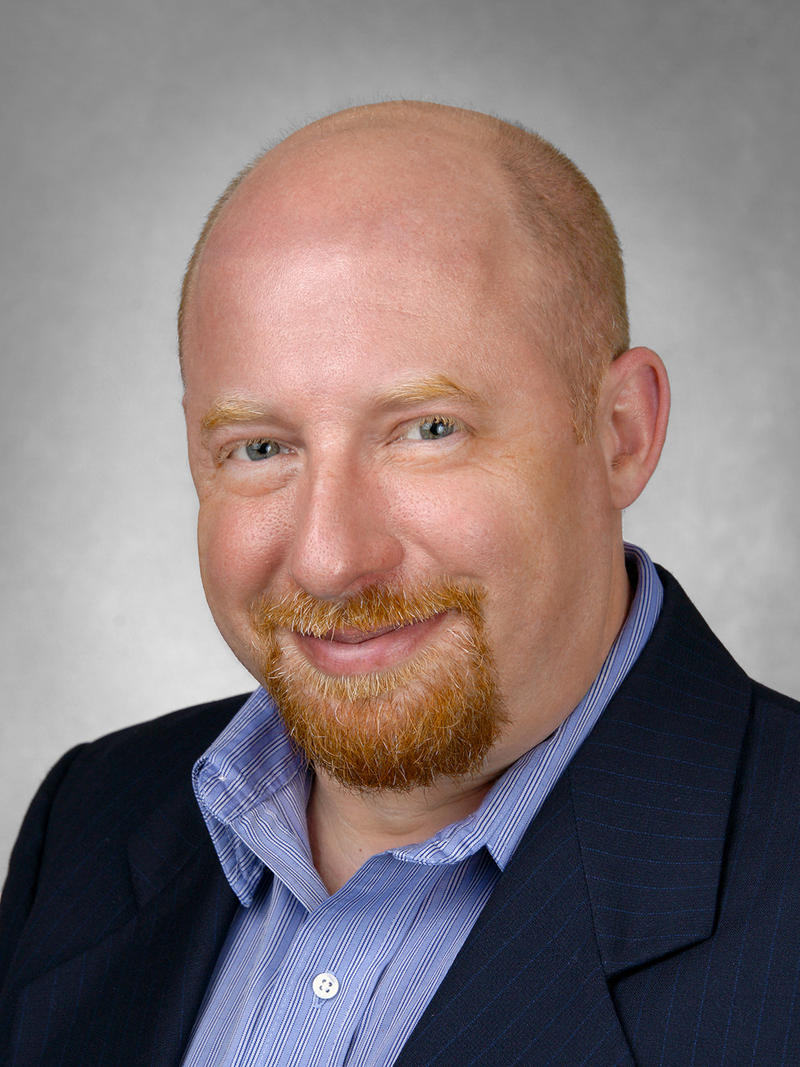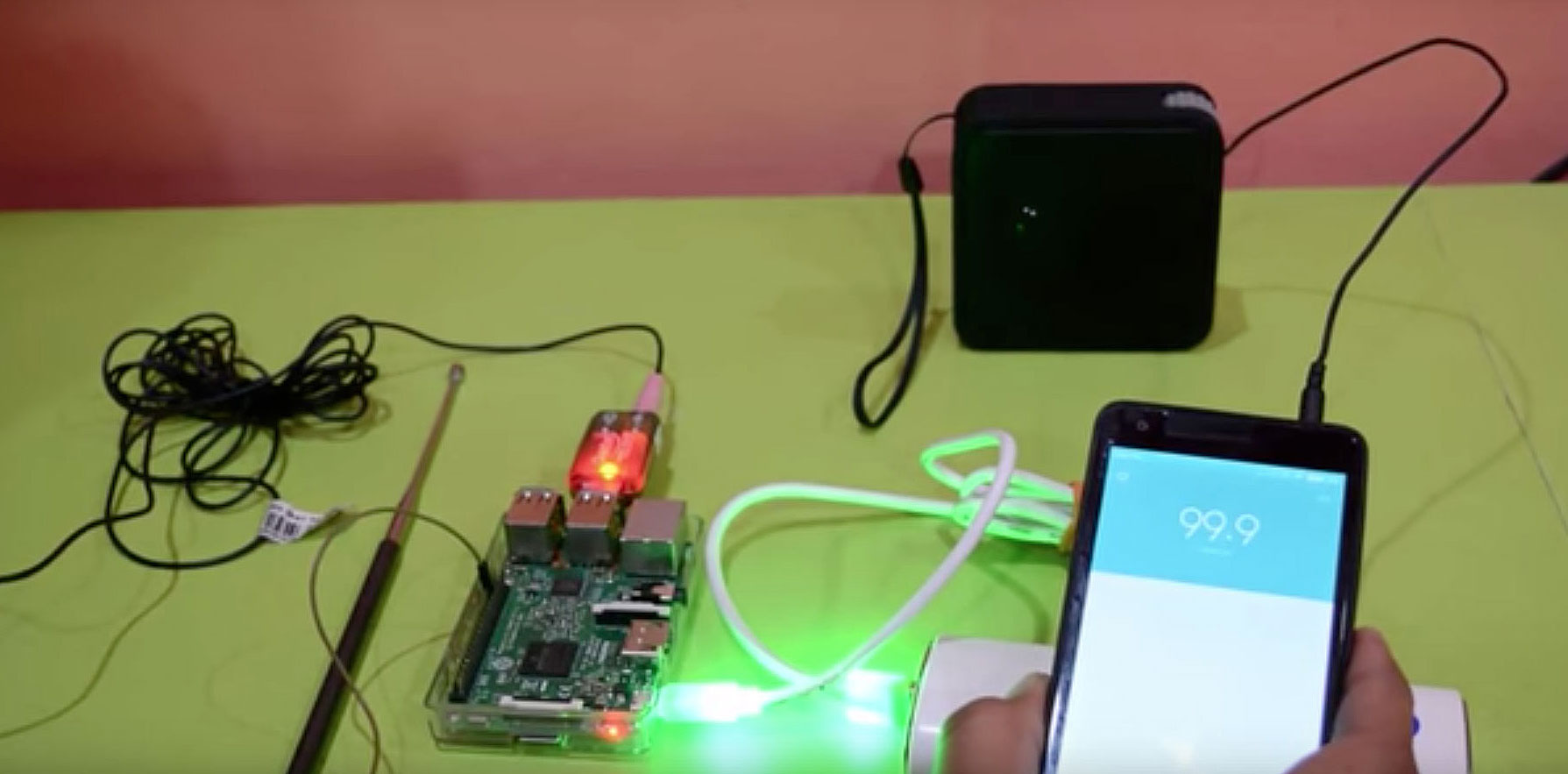WHEAT:NEWS RADIO February 2018 Vol 9, No 2

Limit the Multipath!
It happens. Especially to 92.5 The Wolf, which broadcasts a rimshot signal into Denver from the base of the Rocky Mountains with enough effective radiated power to make up for an antenna barely clearing the average terrain.
The geography, the antenna height, the Class C1 power – together they form the perfect storm for multipath. And sure enough, anyone tuning into 92.5 while commuting between Denver and the bedroom community of Castle Rock could discern the nasty effects of multipath. Until three years ago, the Country station was virtually unlistenable over half its contour area as car radios tried to lock onto multiple versions of the same radio signal bouncing off the mountains.
Barry Thomas, the Director of Engineering for Wilks Broadcast Group, which owned The Wolf, had tried everything. He tried indiscriminately reducing the stereo separation and cutting way back on the composite clipping, a known antagonist to multipath effects like picket fencing and flanging.
Both required compromises, especially in loudness. But Wilks’ programming VP as well as its CEO Jeff Wilks were determined to hang on to loudness and any other competitive advantages they had for the remaining half of the Denver market that could actually tune into the station.
Then, a little over three years ago, Thomas attended an NAB session presented by our Jeff Keith, who had accidentally discovered the effects of program-dependent L-R attenuation on perceived multipath when he designed a mono loudness controller device using the technique for an oldies station he engineered back in the ‘90s. Thomas knew well the station that Keith had mentioned in his presentation; he was the chief engineer of that same station before Jeff!
He began to think Jeff was onto something: What if they could reduce the L-R stereo information just enough for the radio to hide the blend to mono by modifying the energy in the 38kHZ stereo subcarrier? “I knew that reducing the L-R would help, because less energy around 38kHz means that the radio isn’t reacting to trash in the stereo section. And depending how the radio figures out when to blend and when not to blend -- some look for noise around 19kHz and some look for the overall noise floor around 38kHz – the results could be significant,” said Thomas.
He quickly learned that Keith had tested the technique on dozens of radios (the findings are presented in his paper New Findings on FM Stereo Multipath Control) and once sufficiently satisfied, had added the Multipath Limiter to the Wheatstone FM processor line as one more tool for dealing with multipath. “What our Multipath Limiter does is reduce the magnitude of volume fluctuations due to multipath-induced blending by managing a program content's L+R/L-R ratio under very specifically controlled conditions. By intelligently allowing only enough stereo information to fool the ear into believing it's a full stereo signal, the audibility of blending is reduced. The psychoacoustic result, then, is that multipath has been reduced and perceived coverage improved,” explained Keith, Wheatstone’s senior product development engineer.
Thomas convinced his CEO to give it a try, ordered Wheatstone’s flagship processor, the AirAura X3, and put it on the air. He drove to the multipath hot spots and listened to the results from a sampling of radios. “Damned if it didn’t do what Jeff said it would,” said Thomas, who called the station CEO and CFO to report the results. “They immediately called BS on it, saying that no processor could do that! So they hired Pete Salant to come to town for a third-party evaluation. I appreciated that because it was a really great, exhaustive experience that confirmed what we were all hearing.”
Salant, a programmer who took NBC Radio’s New York City FM flagship station WYNY from number 22 to number one in adults 25-54, arrived in Denver a few weeks later with his test gear: a pair of golden ears. The programmer, who has since changed careers, has played classical piano since the age of three. As a 12-year-old, he could identify stations with his eyes closed just by their sound.
Our field engineer Mike Erickson, who Salant commented “possesses the other pair of golden ears,” also arrived in the Mile High City. Listening comparisons began immediately. “It was Pete, Mike and me living in and out of vehicles for three days,” said Thomas.
“We started driving around and doing A-B comparisons. And as soon as we turned on the X3, the signal went from an unlistenable mess to one that sounded entirely competitive. I couldn’t tell you what was going on in that X3, but it was definitely mitigating 90 percent of the multipath,” said Salant, who admits to being stunned by the results. “I mean, half of the metro just couldn’t listen to that station because of the signal. Even if you were trying to listen at a static position, if you moved even two or three inches there was that flanging and multipath distortion. It was all gone with X3,” he said.
Even more incredible, because stereo attenuation is program dependent rather than set at, say, 3dB or 6dB across the board, the Multipath Limiter got the job done without driving away listeners. “It wasn’t obvious to me that there was less L-R, which was a relief because taking away the stereo takes away from the listener experience. The more the sound can come from the doors of the car, the louder it seems and the more it wraps around you and hypnotizes you into listening longer,” commented Salant. In fact, 92.5 The Wolf has seen a steady climb in TSL since installing the AirAura X3 three years ago.
What’s more, the station was able to eliminate composite clipping entirely. “The look-ahead limiter in the X3 effectively gave us that loudness so we lost the composite clipping and all the trash that comes with a clipper, which had contributed to some of the problems we were having in those multipath areas,” explained Thomas.
“I don’t know what they put in that box, but there’s just no overshoot,” added Salant.
Not only did the X3 never leave The Wolf, Wilks purchased two more X3s for Denver stations Mix 100 and KOOL 105.
For details on L-R attenuation and multipath, download Keith’s paper New Findings on FM Stereo Multipath Control.
A Station Is Born
Congratulations to the staff at WATV radio in Birmingham, Alabama, for the launch of their new FM station on February 1 at 9:40 a.m.
V-94.9 joins WATV 900 AM as an important voice in the community. Both are now operating out of newly renovated studios. Our Mike Erickson was there to snap a few pictures of this WheatNet-IP audio networked studio, which includes an E-6 control surface and IP-12 digital audio console. Programming is being processed by our FM-55.

John Bohn of Bohn Broadcast Services designed the newly renovated rooms.
Congratulations to owner and attorney Courtney French and to all the staff members at WATV radio!
Download Our Free E-Book: Advancing AoIP for Broadcast
Putting together a new studio? Updating an existing studio?
We've put together this e-book with fresh info and some of the articles that we've authored for our website, white papers, and news that dives into some of the cool stuff you can do with a modern AoIP network like Wheatstone's WheatNet-IP.
And it's FREE to download!
Revitalization. Where We Stand in Early 2018.
 Let's get one thing right out of the way: the FCC's "AM Revitalization" proceeding was a misnomer. It hasn't done much (at least not yet) for the AM band itself, but it's been very good news indeed for thousands of AM station owners who are finding new opportunities on the FM dial.
Let's get one thing right out of the way: the FCC's "AM Revitalization" proceeding was a misnomer. It hasn't done much (at least not yet) for the AM band itself, but it's been very good news indeed for thousands of AM station owners who are finding new opportunities on the FM dial.
Here's where we stand in early 2018: after allowing existing FM translators to be purchased and moved up to 250 miles during a pair of windows in 2016, the FCC opened two windows in 2017-2018 for AM stations to apply for brand-new FM translators, if they could find space on their local FM dial. Nearly a thousand class C and D AM station owners applied in 2017, followed by more than 850 applications from stations of all classes in the window that opened January 25-31 this year.
These new signals aren't a perfect solution for everyone. Limited to 250 watts under the best of circumstances, many translators run even less power in order to protect full-power FM stations or other translators that got there first. That makes careful frequency and site selection an important part of making a translator work. Except in the smallest of communities, most translators won't provide interference-free coverage of an entire market, which is why one of the first questions I ask a prospective client is, "What's the most important part of the market for you to hit?"
But low power doesn't have to mean a bad-sounding signal. If anything, it makes every piece of the transmission chain that much more critical. This isn't the place to pick the lowest-cost antenna, the cheapest transmitter or the bargain-basement audio processor. When every watt counts, that extra bit of attention to maintaining a top-notch signal can - and will - make your translator stand out. (And for AM stations that haven't had to deal with passing along any data, it can be an eye-opener to have to think about providing dynamic RDS data so that your FM translator can fully compete with its data-laden full-power competitors.)
While the FCC has now closed the window on new translator permits for AM owners, there's still plenty for clever AM licensees to be thinking about. Even if a single translator is limited in power and reach, there's no limit on the number of translators one AM station can employ to cover a broader area. (One AM daytimer near me now has six frequencies to blanket the 60-mile stretch of rural territory between two big cities.) It's worth looking around the neighborhood to see what existing translators might be available for purchase, and perhaps even for a signal upgrade.
And there may even be some actual "AM revitalization" down the road: after removing some outdated regulations on main studio locations and public files, the FCC is still considering some additional pieces of its rulemaking proceeding that could allow struggling AM operators to drop complicated directional arrays or (somewhat controversially) get more power at night, though potentially at the expense of bigger clear-channel signals. Stay tuned!
Scott Fybush is the principal of Fybush Media (fybushmedia.com), a consultancy that provides engineering and brokerage services to broadcasters. He is also the longtime editor and publisher of NorthEast Radio Watch (fybush.com) and the annual Tower Site Calendar.
LPFM. Going Pro.
 There are those who say that the console makes the station. Maybe, maybe not. But we bet it was the first thing you looked at when you got your LPFM license, right?
There are those who say that the console makes the station. Maybe, maybe not. But we bet it was the first thing you looked at when you got your LPFM license, right?
If you’ve done your homework, you’ve probably noticed that consoles made specifically for broadcast are laid out differently than, say, those found in the music store. A real broadcast board is a fairly simple surface absent the sea of unnecessary knobs and controls typical of consumer boards, but with the addition of some basic functions unique to broadcasting. For example, our Audioarts boards let you mute your monitor speakers when your mic is on to eliminate the possibility of feedback, and provide a means of controlling an On Air Tally (light) to alert others that you are currently on-air with a live mic.
The console is probably the most heavily used piece of equipment in the studio, so choose wisely. You’ll also need a decent microphone (we suggest a directional or cardioid mic, which will give you better rejection of background noise), and a decent mic processor, too. Don’t forget a quality player if you’re playing music, and a pair of good headphones, some speakers, an EAS decoder, a phone hybrid and mod monitor.
For equipment tips and suggestions for your new LPFM, download our free Low Power FM Equipment Guide.
Your IP Question Answered

Q: I hear you call WheatNet-IP an “intelligent network.” What do you mean?
A: It actually has a double meaning. We use this term when referring to our AoIP system because all the devices (I/O boxes, consoles, and controllers) have built in intelligence and network connections that allow them to freely exchange data and control. Button panels can control mixers, consoles can control routing, automation can control levels, codecs can start recorders, you get the idea. All of this intelligence is built into the hardware and doesn't require PCs to run it. And each one of our BLADES (our name for the I/O boxes) has so much built in intelligence that it can store all the audio routing and logic functions of the entire network so you're never in the situation that "the network is down" because some control unit or PC failed. Each BLADE has enough intelligence to stream all of its audio I/O, drive its front panel display and meters, manage 64 soft and 12 hard logic ports, operate two 8x2 utility mixers and their faders, operate 8 channels of silence detection switching and alarms with full parameter control, and monitor the network for external control by someone else. All of this is happening while the built-in processor runs a web server and SNMP server for administrative control and monitoring. That's a lot of smarts.
The second reason we use this term is because, well, we think it's very intelligent for you to deploy the Wheatstone WNIP network
NAB 2018 Here We Come!
We’re Vegas bound with all the latest in audio processing, editing, IP networking and control surfaces. Stop in at booth N6806 and ask us about our new consoles and the very latest in virtualization. Industry observer Scott Fybush will be there to capture it all on video for those of you not attending NAB this year.
We’ll also be talking shop elsewhere during the show, starting with our presentation on the latest in the virtual realm, The Mission’s the Same -- The Tools Have Changed, Saturday. It starts at 1:30 p.m. in N260.
Also on Saturday, starting at 3:20 p.m. in room N260-C, our Mike Erickson and Brad Harrison will discuss Processing the Many Forms of Audio Delivery.
And finally, don’t miss Steve Dove’s discussion on new audio processing technology, Phase-Free: Friend or Foe? on Sunday starting at 10:40 a.m. in N260-B.
We’re looking forward to seeing you all in a few weeks and showing off some new shiny audio gear.
Kaden is in the House this NAB

Veteran major-market radio personality and power VoxPro user Kaden (@KADENRADIO) will be in Wheatstone booth N6806 this NAB to demo the latest VoxPro version and offer tips on how to rapidly edit phone calls in a PPM ratings world, in real-time. He will be in the booth at 11 a.m. and 2 p.m. Monday and Tuesday, and 11 a.m. Wednesday.
“VoxPro allows us to pack more personality into every call, and extremely fast," says Kaden, who takes hundreds of listener call-ins weekly. Currently located in Phoenix, he has a long and varied resume that includes positions at Entercom Communications, CBS Radio, and iHeartMedia with stints in Phoenix, Houston, Dallas, Minneapolis, New York City, among others.
The Dan Hyatt Interview
Scott Fybush talks with Dan Hyatt from Radio Rescue about how processing is helping him do things he never imagined possible.
Got feedback or questions? Click my name below to send us an e-mail. You can also use the links at the top or bottom of the page to follow us on popular social networking sites and the tabs will take you to our most often visited pages.




